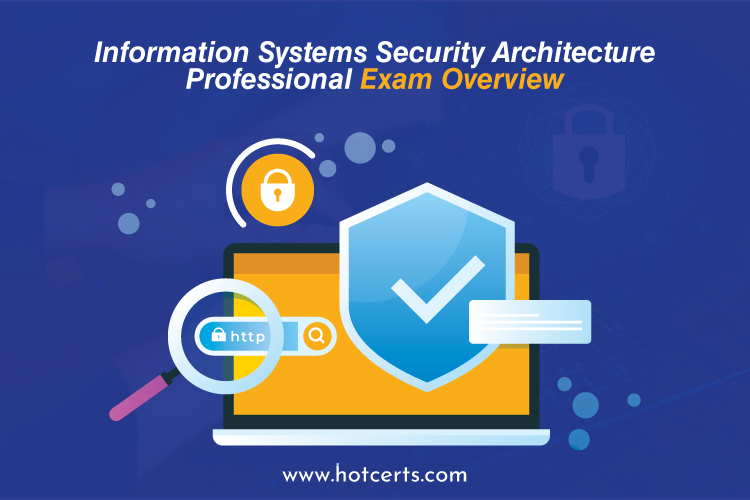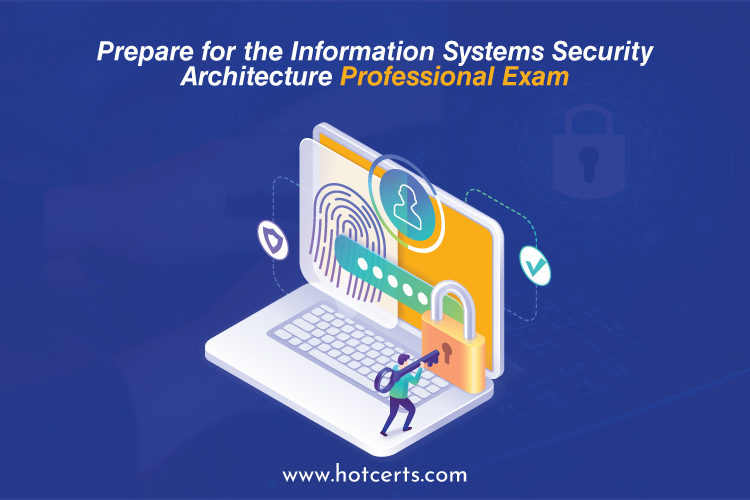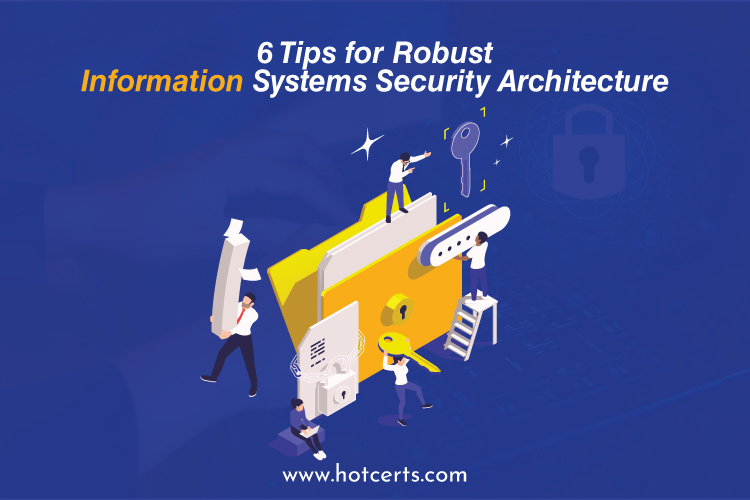Use this fast-start guide to learn more about the Information Systems Security Architecture Professional exam. This study guide includes goals and tools to help you prepare for the CISSP-ISSAP Information Systems Security Architecture Professional exam. The Sample Questions will help you in determining the kind and exertion level of the questions. At the same time, the Practice Exams will familiarize you with the format and setting of an exam. Before taking the actual Information Systems Security Architecture exam certification, you should thoroughly read this guide.
By achieving the ISSAP Information Systems Security certification, you demonstrate your ability to build, implement, and evaluate security solutions. You also excel at providing risk-based counsel to senior management in line with corporate goals.
Continue reading and exploring to learn how you can pass the CISSP-ISSAP Information Systems Security Architecture Professional exam in 2024.
What is the Information Systems Security Architecture Professional Certification?
Organizations greatly appreciate the ISSAP Information Systems Security Architecture exam certification because it demonstrates that the bearer possesses the necessary knowledge and abilities to develop, engineer, and manage complex security systems. It is also helpful for people wishing to enhance their careers in information security because it indicates a degree of knowledge.
The Information Systems Security Architecture Professional exam certification is an excellent investment for information security professionals who want to demonstrate their knowledge and enhance their careers.
The ISSAP Information Systems Security Architecture Professional exam certification is intended for those with a strong background in developing and delivering security solutions within an organization’s complete information systems and architecture.
This certification focuses on more prominent elements of information security, including risk management, security planning, and security architecture.
Information Systems Security Architecture Professional Exam Overview

Here are the CISSP-ISSAP exam details you must know before taking the actual exam:
- Exam Name: Information Systems Security Architecture Professional
- Exam Code: CISSP-ISSAP
- Exam Duration: 180 minutes
- Passing Score: 70%
- Number of Questions: 125
- Exam Format: MCQs
- Exam Fee: $599 USD
Information Systems Security Architecture Professional Exam Domains
Here are the CISSP Information Systems Security Architecture Professional Exam domains you must know before taking the actual exam in 2024:
-
Architect of Governance, Compliance, and Risk Management – 17%
- Determine the legal, regulatory, corporate, and industry needs.
- Determine the appropriate information security standards and guidelines.
- Identify independent and contractual duties (for example, supply chain, outsourcing, partners).
- Determine the relevant sensitive/personal information regulations, norms, and privacy requirements.
- Design for transparency (e.g., identify regulatory, legislating, forensic demands, segregation, and high assurance systems).
- Control Risk
- Identify and classify hazards.
- Assess risk.
- Advise risk treatment (e.g., mitigation, transfer, acceptance, avoidance)
- Risk management and reporting
-
Security Architecture Simulation – 15%
- Identify the security architecture approach.
- Types and scope (for example, enterprise, networks, service-oriented architecture, cloud, Internet of Things, industrial control systems /Supervisory Control and Data Collection (SCADA)
- Reference Designs and Blueprints
- Security configuration (for example, baselines, benchmarks, and profiles)
- Network setup (for example, physical, logical, high performance, segmentation, and zones)
- Verify and validate the design (for example, Functional Acceptance Tests (FAT) and regression).
- Validate threat modeling conclusions, such as attack vectors, effect, and likelihood.
- Identify gaps and other possibilities.
- Independent verifying and validating (IV&V) (for example, tabletop workouts, simulation and modeling, manual evaluation of functions)
-
Infrastructure Security Architecture – 21%
- Develop infrastructure security needs.
- Options include on-premise, cloud-based, hybrid, and Internet of Things (IoT) with zero trust.
- Develop defense-in-depth architecture.
- Management networks
- Industry Control System (ICS) security
- Network safety
- Operating system (OS) safety
- Database safety
- Container protection
- Cloud burden security
- Firmware Security
- user alertness to security concerns
- Implement technological security safeguards.
- Design border protection (e.g., firewalls, VPNs, airgaps, software-defined boundaries, wireless, cloud-native).
- Secure handling devices (e.g., BYOD, mobile, server, outcome, cloud instance, and storage)
- Design and implement infrastructure monitoring.
- Network visibility (for example, sensor location, time conciliation, span of control, and record compatibility)
- Active or passive gathering solutions (e.g., span the harbor, port mirroring, press, inline, flow logs)
- Security analysis (e.g., SIEM, log collecting, machine learning, UBA)
- Develop cryptographic infrastructure solutions.
- Determine the cryptographic design concerns and restrictions.
- Determine the cryptographic architecture (e.g., in transit, use, or rest).
- Plan the critical administration lifecycle (e.g., generation, storage, distribution).
- Create a secure network and communication network (e.g., VPN, IPsec, TLS).
- Evaluate the physical and environmental safety needs.
- Map physical security demands to organizational demands (for example, perimeter protection, interior zoning, and fire suppression).
- Validate physical security measures.
-
Identity and Access Management (IAM) Design – 16%
- Design identity administration and lifetime.
- Establish and verify identification.
- Assign IDs to people, services, processes, and devices.
- Identity Providing and De-provisioning
- Define trust connections (e.g., federated or standalone).
- Define authentication approaches, such as risk-based, location-based, knowledge-driven, object-based, and characteristics-based.
- Authentication methods and technologies (e.g., SAML, RADIUS, & Kerberos)
- Design the access control management and lifespan.
- Concepts and principles of access control include discretionary/mandatory, segregation/Separation of Duties (SoD), and least privilege.
- Access control setups (physical, logical, administrative)
- The authorization process and workflow (e.g., governance, issuance, periodic review, revocation)
- Roles, rights, and responsibilities for system, application, and data access control (e.g., groups, Digital Rights Management (DRM), trust relationships)
- Management of privileged accounts.
- Authorization, such as Single Sign-On (SSO), rule-based, role-based, and attribute-based
- Design identification and access solutions
- Access control methods and technologies, such as eXtensible Access Control Markup Language, or X, along with the Lightweight Directory Access Protocol (LDAP),
- Credential management systems (such as password management, certifications, and smart cards)
- Integrated Identity and Access Management (IAM) design (cloud-based, on-premise, hybrid)
- Decentralized authentication and authorization (IAM) architecture (cloud-based, on-premise, hybrid)
- Implementing Privileged Access Monitoring (PAM) for users with enhanced privileges
- Accounting (logging, surveillance, auditing)
-
Architect of Application Security – 13%
- Integrate the Software Developing Life Cycle (SDLC) with the application’s security framework.
- Evaluate code review methodologies (e.g., dynamic, manual, static).
- Evaluate the requirement for application security (e.g., Web Application Firewall (WAF), anti-malware, secure Application Programming Interface (API), secure Security assertion markup language.
- Determine the encryption needs (e.g., at rest, in transit, in use).
- Evaluate the necessity for secure connections between applications, databases, and addition or other endpoints.
- Use a secure code repository.
- Determine app safety capabilities and strategies (e.g., open-source, cloud-based service providers (CSP), SaaS, IaaS, and PaaS.
- Examine the security of apps (custom, commercial off-the-shelf (COTS), internally, cloud).
- Determine application cryptography solutions (e.g., crypto API, pseudo-randomized number generator (PRNG), key organization).
- Assess the applicability of security measures to system elements (e.g., mobile and web client apps, proxy, application, and data services).
- Identify standard proactive measures for apps, such as the Open Web Application Safety Project (OWASP).
-
Safety Operations Architecture – 18%
- Collect security operation requirements
- Design security-related monitoring (for example, Security Information and Event Management (SIEM), confidential threat intelligence, user activity analytics, and incident response (IR) processes)
- Detection and analysis
Proactive and automatic security monitoring and repair (for example, vulnerability leadership, compliance audit, penetration test)
Develop business continuity (BC) and resilience solutions.
- Integrate Business Impact Analysis (BIA).
- Determine the recovery and survival strategy.
- Determine continuity and accessibility solutions (e.g., cold, warm, hot, cloud backup).
- Define the processing agreement needs, such as provider, mutually beneficial, mutual, cloud, and virtualization.
- Set Recovery Time Objectives (RTO) and Rehabilitation Point Objectives (RPO).
- Create secure contingency communications for operations, such as backup means of communication and Out-of-Band (OOB).
- Validate the architecture of the business interruption plan (BCP)/disaster recovery strategy (DRP).
- Design for incident response (IR) management
- Preparation includes communication plans, Incident Response Plans (IRPs), and training.
- Identification
- Control
- Eradication Recovery
- Review the lessons learned.
How to Prepare for the Information Systems Security Architecture Professional Exam?

To prepare perfectly for the Information Systems Security Architecture Professional exam, consider the following analytical stages for establishing an optimal program for your CISSP-ISSAP Exam Preparation.
-
(ISC) Official Website.
The official website of (ISC)² provides the most trustworthy information regarding the test. (ISC)² offers a CISSP-ISSAP examination guide for each certification and test. Information Systems Security Architecture Professional exam Practice. The (ISC)² website provides exam content relevant to all information security disciplines. It also contains the aims and basic information about the exam.
-
Review all of the exam objectives.
The initial procedure in the CISSP-ISSAP test Guide is to study all the test objectives. Also, visit the Official Website of the CISSP – ISSAP Exam. It is an especially authentic site for apparent motives. It will give you a comprehensive perspective of all facts connected to the CISSP – ISSAP test. So, be sure you start with this step.
-
Download Exam Skill Outline.
Afterward, you must obtain the exam skill outline, accessible through the official website. You may get the new exam outline by downloading it. The overview lists all of the domains and subtopics. Remember to use only the official website. Because the exam is modified periodically, the official website is your source for factual information.
-
Official ISC² Guide to the CISSP – ISSAP.
The Official (ISC)² Companion to the CISSP-ISSAP provides an official assessment of essential topics and requirements for the CISSP-ISSAP. This book explains everything you need about this elite and specialist qualification. See how the Information Systems Security Architecture Professional exam focus builds on the CISSP and assists you in designing the next stage of your career.
-
Online Self-paced Training
Official (ISC)² Digital Self-Paced Training gives you the autonomy and trust to move on with your timetable. You get immediate access to prerecorded video content from a (ISC)² Authorized Teacher, a topic matter expert with the credential you’re pursuing.
-
Take CISSP-ISSAP Practice Tests.
The most critical step is to practice the test. Practice tests are the best ones that ensure the candidate’s readiness. Several Information Systems Security Architecture exam certifications are available on the internet today, and candidates can select whichever they like. The practice exam helps prepare for the Information Systems Security Architecture exam certification.
Conclusion
The Information Systems Security Architecture exam certification is primarily aimed at applicants who desire to further their careers in the Cybersecurity Policy and Implementation sector. The Information Systems Security Architecture exam certification certifies that the applicant has core knowledge and demonstrated abilities in the field of ISC2 ISSAP. You must prepare strategically and comprehensively to succeed on the ISC2 CISSP-ISSAP test. Following these top ten ideas and analyzing the rewards can help you prepare for a test and lay the groundwork for a successful future in information security.
FAQs (Frequently Asked Questions)
How Many Questions Are In The CISSP-ISSAP Practice Exam?
There are 125 questions in the Information Systems Security Architecture Professional exam.
How Much Time Will The Applicant Have To Finish The CISSP – ISSAP Exam?
The applicant will have 3 hours to complete the CISSP Information Systems Security Architecture Professional exam.
In What Format Is The Exam Available?
The test is accessible in a multiple-choice style.

